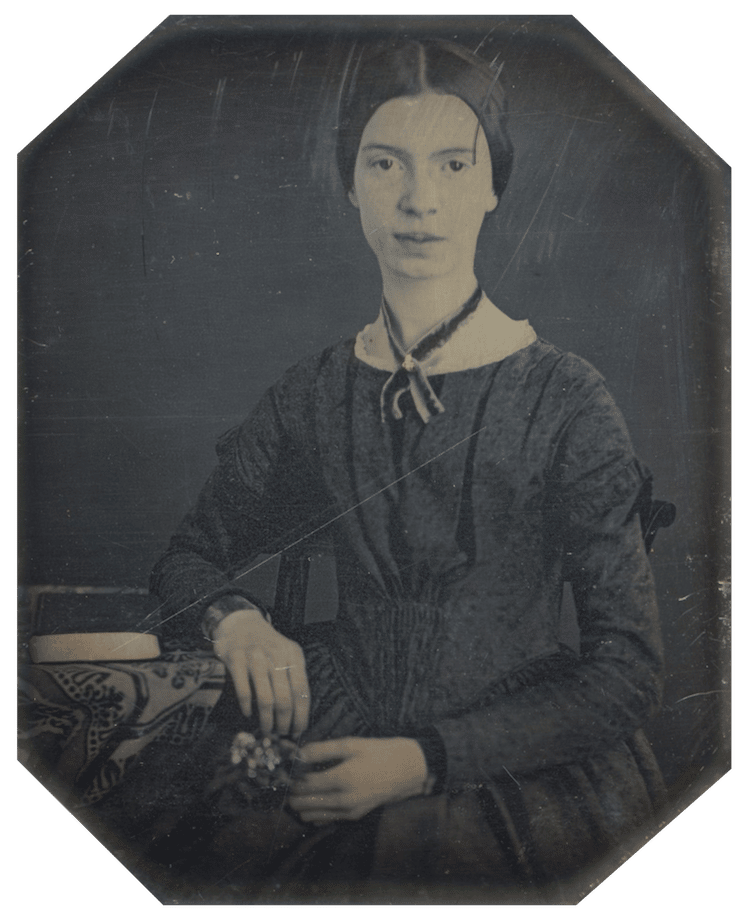
Daguerrotype portrait of Emily Dickinson, c. 1847 (Photo: Wikimedia Commons, Public domain)
Unlike novels where a story unfolds over the course of hundreds of pages, poets communicate themes and feelings within just a few lines. One of the most beloved masters of this craft is the 19th-century writer Emily Dickinson. Her unique style of writing used unconventional punctuation and structure that was extremely modern for the time.
Despite being one of the most famous poets in American literature, not much is known about her private life. Born in Amherst, Massachusetts, she spent the majority of her life in relative isolation at the family home. She never married or had children, and most of her significant relationships were maintained via written correspondence. Throughout these years of seclusion, Dickinson continued to write her poetry, accumulating 1,800 poems by the time of her death at the age of 55.
Scroll down to learn 8 facts about the American poet.
Learn 8 facts about the 19th-century American poet Emily Dickinson.
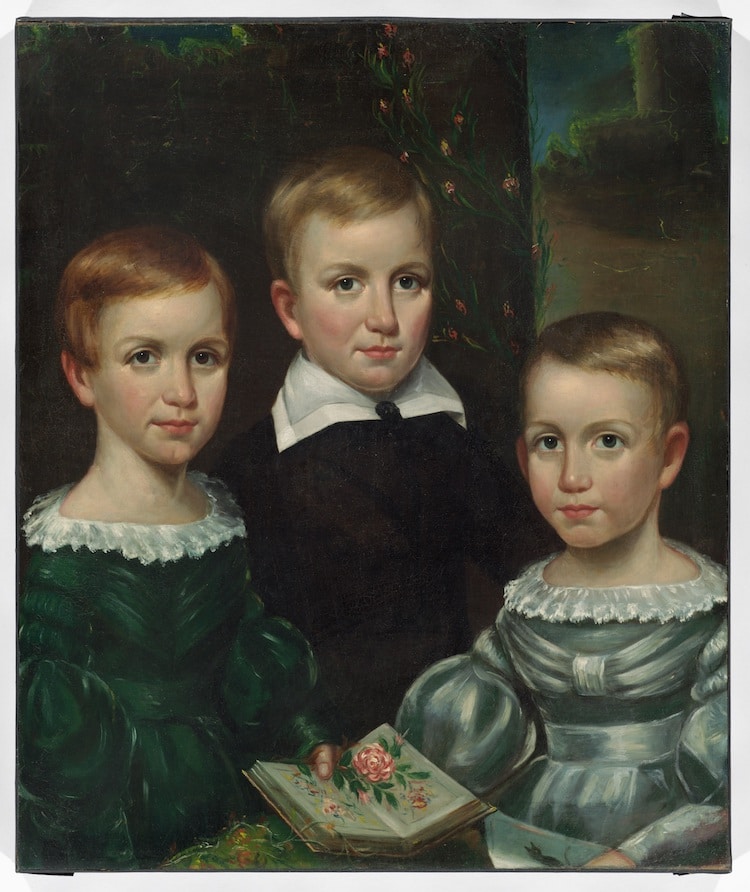
Otis Allen Bullard, “Portrait of Emily Elizabeth, Austin, and Lavinia Dickinson,” c. 1840 (Photo: Wikimedia Commons, Public domain)
Her family had close ties to Amherst College.
Dickinson spent the majority of her life in Amherst, Massachusetts at the family home. The impressive property—which is now a museum dedicated to Emily Dickinson—was built by her paternal grandfather, Samuel Dickinson, who was one of the founders of Amherst College. Dickinson’s father, Edward was a trustee of the institution in addition to being a practicing lawyer.
She was a recluse.
Dickinson never traveled very far from her hometown, but she did not begin to withdraw from society until the 1850s. It is still unclear why she isolated herself. A physician diagnosed Dickinson with “nervous prostration” during her lifetime, but modern scholars have proposed agoraphobia and epilepsy as other possible causes.
By the late 1860s, Dickinson’s seclusion had become well known in her hometown. She corresponded with her friends and family primarily through letters, rarely left the house, and talked to visitors through the door rather than face-to-face.
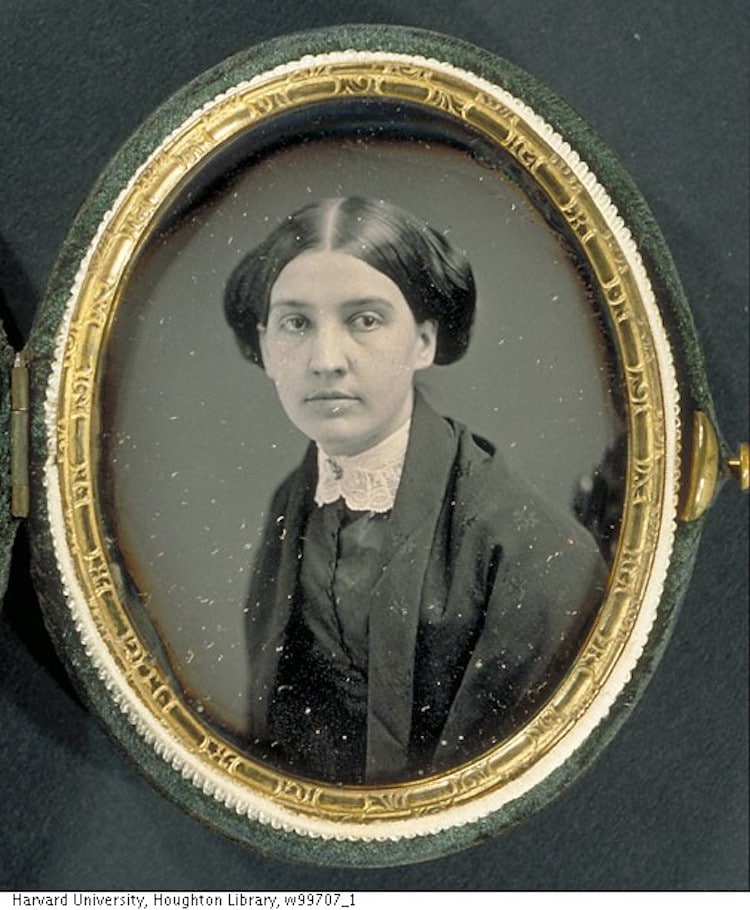
Daguerreotype portrait of Susan Dickinson, Emily Dickinson’s sister-in-law, c. 1913 (Photo: Wikimedia Commons, Public domain)
She had a close relationship with her sister-in-law.
Dickinson’s older brother, Austin, married Susan Gilbert in 1856, and the couple moved into a new home next to the Dickinson Homestead called the Evergreens. Susan and Dickinson became very close and exchanged countless letters over the course of Dickinson’s lifetime.
Susan was one of Dickinson’s great sources of literary support and provided feedback on her poems. “With the exception of Shakespeare, you have told me of more knowledge than any one living,” Dickinson wrote Susan in a letter.
She wore a lot of white (but not all the time).
One of the most famous myths surrounding Dickinson is that she exclusively wore white. And while she did wear an extensive amount of white garments—and in fact, the most detailed description of Dickinson by her friend and literary critic, Thomas Wentworth Higginson, places her in a white piqué—there is evidence to support that she wore other colors as well, like brown and black. The only conclusive portrait of Dickinson features her in a dark-colored dress.
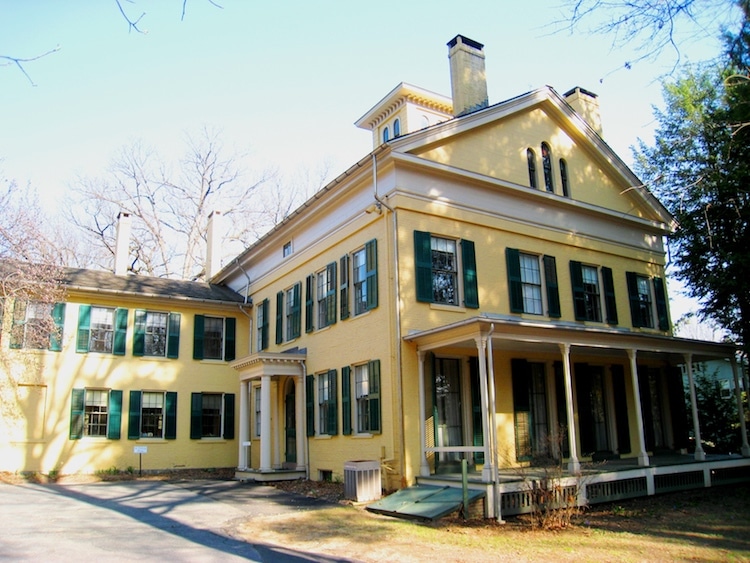
Photo of the Emily Dickinson Museum, formerly the Homestead of the Dickinson family (Photo: Daderot via Wikimedia Commons, Public domain)
She dedicated poems to an unknown love interest.
A group of Dickinson’s poems was addressed to an anonymous figure she called “Master,” “Sir,” and “Signor.” Several theories have circled around the Master Letters. While some believe they describe a person or multiple individuals, others propose that Dickinson is talking about a muse or even God.
She was an avid gardener.
The Dickinson Homestead was famous for its abundance of flowers and plants. Dickinson and her sister were educated in botany as children, and very knowledgeable about gardening. Even when she did not see people in person, Dickinson was known to send flowers and a poem in her place.
She kept a collection of pressed flowers.
In addition to cultivating exotic flowers in the Homestead garden, Dickinson also kept an herbarium, which is a collection of preserved plants for scientific studies. Inside the 66-page leather-bound book were 424 pressed flowers, cataloged alongside detailed written notes about each species.
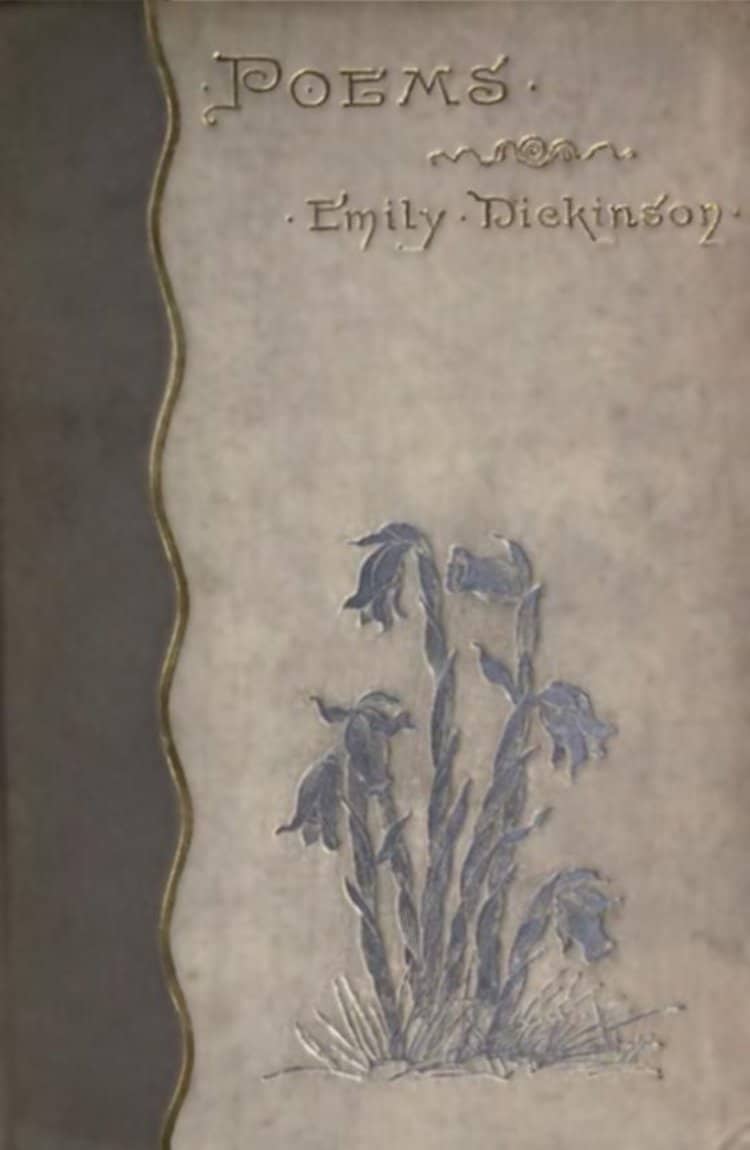
Cover of the first edition of Emily Dickinson’s “Complete Poems,” published in 1890, four years after her death (Photo: Wikimedia Commons, Public domain)
Her first book of poetry was published posthumously.
After Dickinson’s death in 1886 at the age of 55, her collection of 1800 poems was uncovered by her younger sister, Lavinia. Four years later, in 1890, Dickinson’s Complete Poems was published by Thomas H. Johnson.
Related Articles:
366 Melting Candles are a Tribute Emily Dickinson’s Poems
Get To Know F. Scott Fitzgerald, the Legendary Author Responsible for ‘The Great Gatsby’
Symbolism: A Meaningful Approach to Turn-Of-The-Century Poetry and Painting
